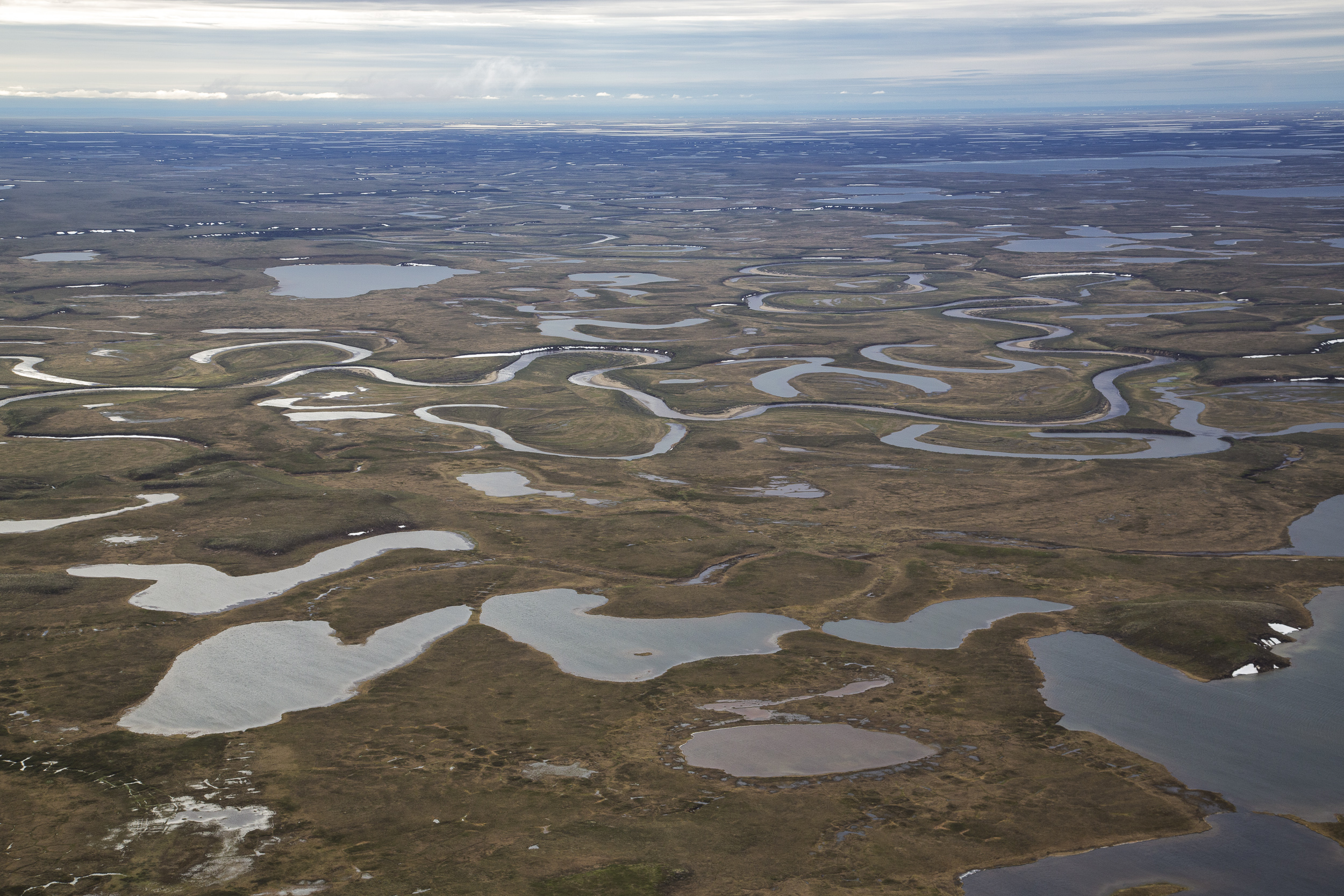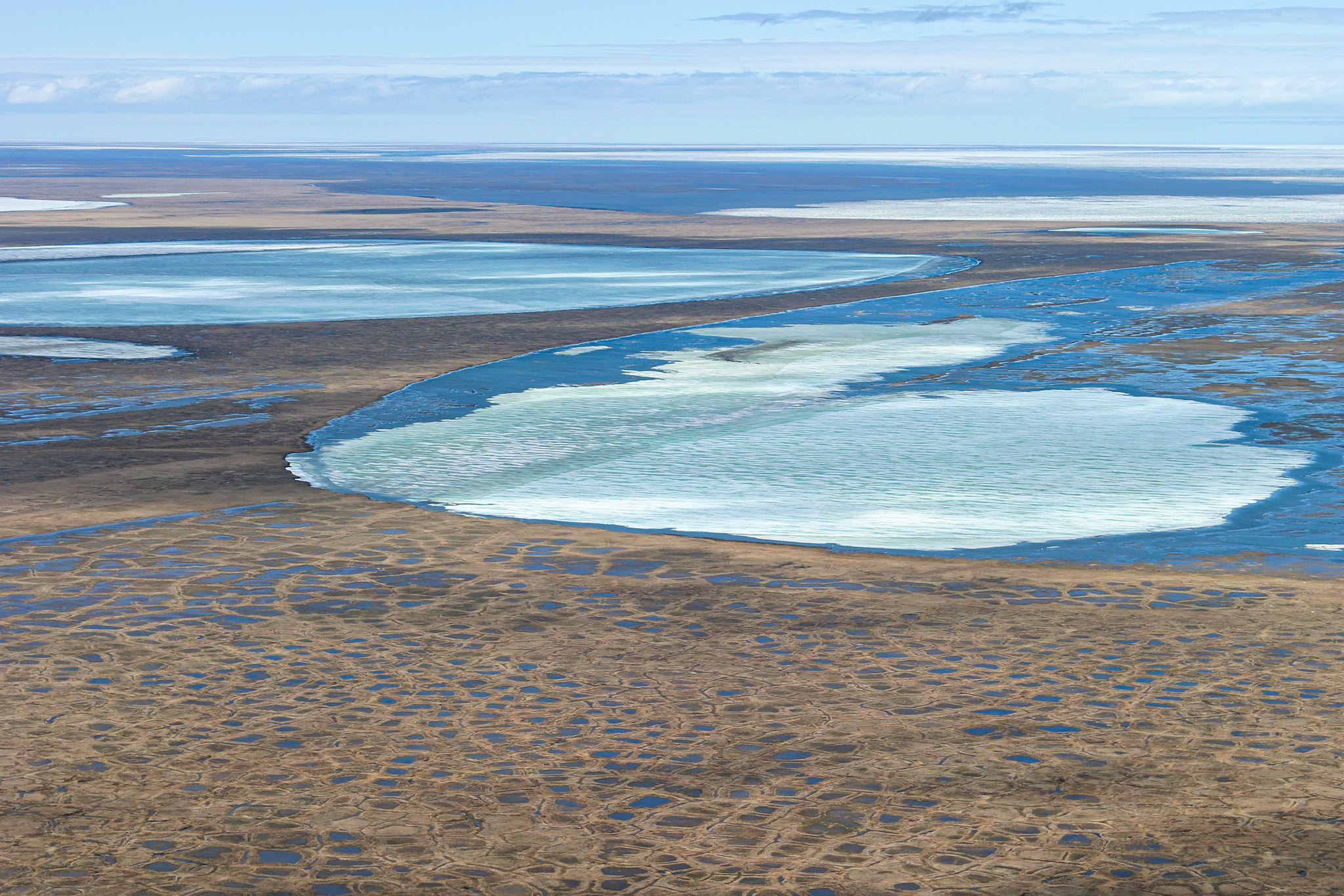Lawsuits seek to overturn Trump plan for expanded NPR-A oil development
An Obama-era plan allowed drilling on about half the reserve, but the Trump plan to replace it opens far more territory.

Several environmental groups on Tuesday filed two lawsuits seeking to overturn the Trump administration’s endorsement of expanded oil development on federal territory on the western side of Alaska’s North Slope.
The lawsuits, filed in U.S. District Court in Anchorage, target the final environmental impact statement for a new management plan that allows much more oil leasing in the National Petroleum Reserve in Alaska. The area, west of the core North Slope oil fields, has received less attention than the Arctic National Wildlife Refuge farther east, but has emerged as a hotbed of oil exploration and new development.
One lawsuit was filed by six environmental organizations, and the second was filed by rour organizations.
The final EIS, issued in June by the U.S. Bureau of Land Management, selects as the preferred alternative a plan allowing about 18.7 million acres of the 23-million-acre reserve to be opened to oil leasing. The Trump administration Integrated Activity Plan, which has yet to be made final, would replace an Obama-era plan that allowed leasing in about half of the reserve but preserved the other half as protected areas for their environmental and cultural values.
The lawsuits allege that the BLM violated the National Environmental Policy Act, which governs the environmental impact statement process, and the Naval Petroleum Reserves Production Act, the 1976 law that established the NPR-A as a multiple-use land unit managed for both resource extraction and environmental and cultural preservation.
The BLM violated those laws by “failing to do an adequate analysis or take a hard look at the potential direct, indirect, and cumulative impacts of its decision or at potential mitigation measures,” by failing to fully consider less-disruptive alternatives and by neglecting its obligation to “mitigate reasonably foreseeable and significant adverse effects,” one of the lawsuits said. (The environmental plaintiffs are also parties in lawsuits filed Monday that seek to overturn the Trump administration’s plans for selling off oil leases in the Arctic National Wildlife Refuge.)

The northeastern corner of the NPR-A has been the site of major new discoveries and developments. The Nanushuk formation runs through it and is the apparent source of oil for the big Willow discovery that ConocoPhillips plans to develop. Willow would more than 100,000 barrels per day and be the westernmost producing oil field on the North Slope, according to ConocoPhillips and the BLM, which earlier this month endorsed the company’s development plan in a separate EIS.
The new Trump plan for managing the petroleum reserve results from a directive issued by former Interior Secretary Ryan Zinke. In a 2017 order, Zinke called for greatly expanded oil activity in Arctic Alaska, both onshore and offshore, and announced that the Obama administration’s policies for the NPR-A and elsewhere would be overturned.
The Obama administration’s NPR-A integrated activity plan had expanded existing protections by designating five “special areas” closed to development. The plan enlarged protections around Teshekpuk Lake, the largest lake on the North Slope and an area of vital importance to Arctic-migrating birds from around the world.
The new Trump plan, if enacted, would eliminate two of those protected areas. It would allow oil leasing even in Teshekpuk Lake, which is in the area considered to be highly prospective for hydrocarbons. The lake itself has been off-limits to development since the Reagan administration.
In a statement, the Interior Department defended the environmental impact statement and its recommended alternative.
“Responsible exploration and development of the NPR-A is vital to our nation’s energy independence and economic security. The Department’s commonsense actions are lawful and based on the best available science, and we will continue to implement President Trump’s agenda to create more American jobs, protect the safety of American workers, support domestic energy production and conserve our environment,” the statement said.
The timing of the new lawsuits is notable.
The new Trump integrated activity plan has yet to be approved with a record of decision. Usually, legal challenges are filed after those decisions are issued. However, a provision in the quirk in the Naval Petroleum Reserves Production Act calls for any legal challenges to leasing-related plans to be filed within 60 days of the time that a relevant EIS is published in the Federal Register.
In recent years, annual NPR-A lease sales have been held in November or December, usually coordinated with state lease sales for the central North Slope, Brooks Range foothills and nearshore areas of the Beaufort Sea.
The next NPR-A lease sale has yet to be scheduled, but it will adhere to whatever record of decision is in effect at the time, said Lesli Ellis-Wouters, a spokeswoman for the BLM’s Alaska region.
This story has been updated to include information about a second lawsuit.